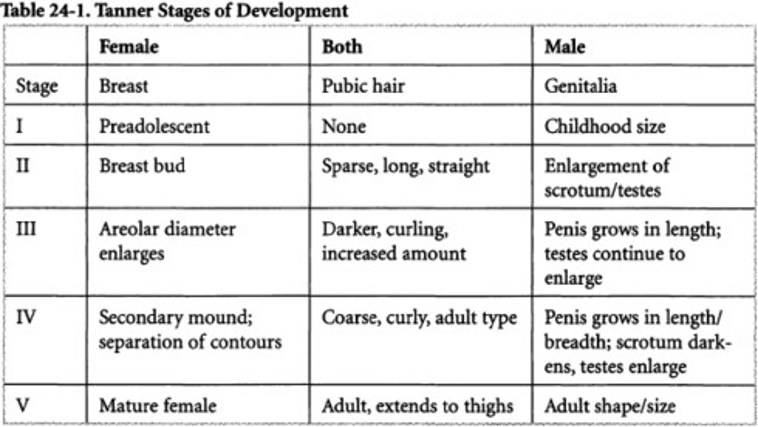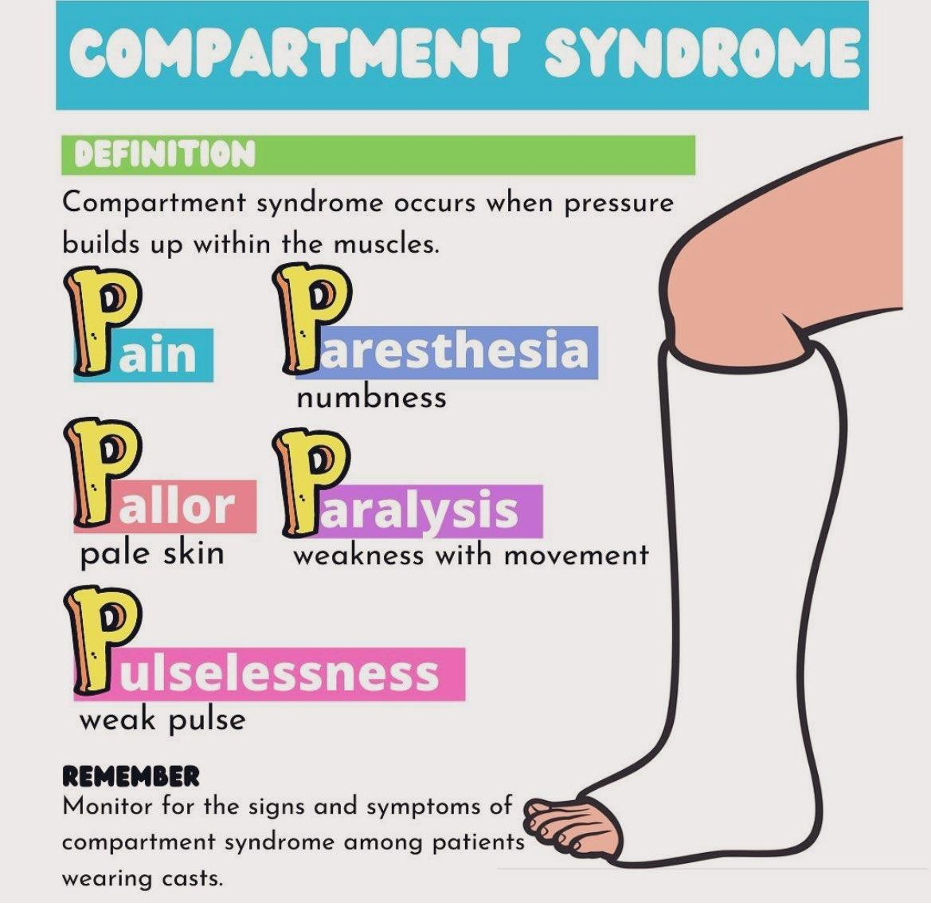The nurse is explaining Tanner staging to an adolescent and mother. Which statement best describes Tanner staging?
Staging of puberty based on the initiation of primary sexual characteristics
Predictable stages of puberty based on primary and secondary sexual characteristics
Staging of puberty based on the initiation of menarche and nocturnal emissions
Predictable stages of puberty that are based on chronologic age
The Correct Answer is B
The statement that best describes Tanner staging is option B. Tanner staging is a system used
to classify and assess the progression of puberty based on the development of both primary
and secondary sexual characteristics. It provides a framework for evaluating the physical
changes that occur during puberty, such as breast development in females, testicular
enlargement in males, pubic hair growth, and other secondary sexual characteristics. The
Tanner staging system includes several stages that represent the sequential progression of
puberty in individuals.
staging of puberty based on the initiation of primary sexual characteristics in (option A) is not
correct because it, does not encompass the full scope of Tanner staging, as it does not
consider the progression of secondary sexual characteristics.
staging of puberty based on the initiation of menarche (the onset of menstruation) and
nocturnal emissions, in (option C) is not correct. While menarche and nocturnal emissions are
significant events that occur during puberty, they do not encompass the entire Tanner staging
system, which involves a broader range of physical changes.
predictable stages of puberty based on chronologic age, in (option D) is not correct. Tanner
staging is based on the progression of physical changes and sexual maturation, rather than
being solely determined by chronological age. Puberty can vary in onset and duration among
individuals, making chronological age an unreliable indicator of pubertal development.

Nursing Test Bank
Naxlex Comprehensive Predictor Exams
Related Questions
Correct Answer is C
Explanation
Compartment syndrome is a condition that can occur following an injury, such as a fracture, where there is increased pressure within a closed space (compartment) in the body. In the case of a forearm fracture, swelling and increased pressure within the compartment can lead to compression of the nerves and blood vessels, resulting in symptoms such as pain, numbness, and decreased function of the affected muscles.
The inability to extend the fingers suggests impairment of the extensor muscles, which are innervated by the radial nerve. If the radial nerve is compressed or injured due to compartment syndrome, it can result in a loss of function in the muscles it innervates, leading to the inability to extend the fingers.
damage to the epiphyseal plate in (option A) is incorrect because it, is not related to the inability to extend the fingers. The epiphyseal plate is the growth plate in long bones, and damage to it would typically affect bone growth rather than finger extension.
, stating that it is normal following this type of injury in (option B), is incorrect. Inability to extend the fingers is not a normal or expected finding after a forearm fracture. It suggests a potential complication or underlying issue.
fat embolism in (option D) is incorrect because it, is unlikely to cause an inability to extend the fingers. Fat embolism occurs when fat globules from a broken bone enter the bloodstream and can lead to respiratory and neurological symptoms, but it would not specifically cause an isolated loss of finger extension.

Correct Answer is B
Explanation
The term used to describe an abnormally increased convex angulation in the curvature of the thoracic spine, which appears as a "hump back" or rounded upper back, is kyphosis.
Kyphosis refers to an excessive forward rounding or curvature of the thoracic spine, leading to a visible hump-like appearance. It can result from various causes, including poor posture, congenital abnormalities, osteoporosis, or certain medical conditions.
ankylosis in (option A), refers to the abnormal fusion or immobility of a joint, typically due to inflammation or injury.
Lordosis, in (option C) refers to an excessive inward curvature of the lower back, causing the abdomen and buttocks to protrude.
, scoliosis in (option D), refers to an abnormal sideways curvature of the spine, typically in an "S" or "C" shape. It is different from kyphosis, which primarily affects the thoracic spine and results in a rounded upper back.
Whether you are a student looking to ace your exams or a practicing nurse seeking to enhance your expertise , our nursing education contents will empower you with the confidence and competence to make a difference in the lives of patients and become a respected leader in the healthcare field.
Visit Naxlex, invest in your future and unlock endless possibilities with our unparalleled nursing education contents today
Report Wrong Answer on the Current Question
Do you disagree with the answer? If yes, what is your expected answer? Explain.
Kindly be descriptive with the issue you are facing.
